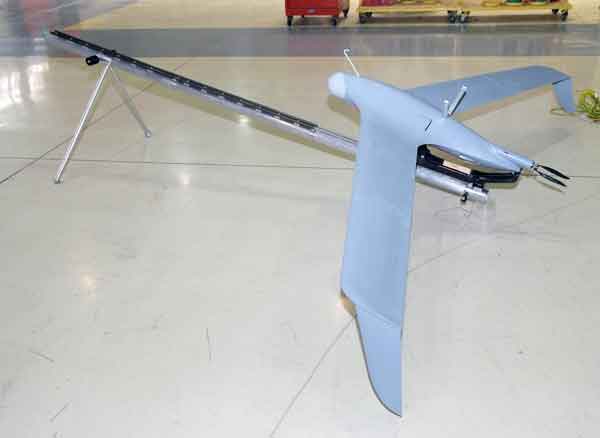has doubled the endurance of its BirdEye-650 unmanned aircraft system to 6 hours through the use of a fuel cell power pack.
The advance was demonstrated during recent test flights, and the company predicts that longer missions will be possible using the new technology.
Tommy Silberring, General Manager of IAI’s Malat UAS division, says that the company has decided to use fuel cells on all its small aircraft designs. The Panther tilt rotor design is also being tested with fuel cells, he adds.
Powered by three electric motors, the vertical takeoff and landing Panther has a 65 kg (143lb) takeoff weight and a previously reported endurance of 6 hours. A Mini Panther derivative weighs 12 kg and can be operated for 2 hours.
Silberring says Malat’s preferred fuel cell system uses highly reactive alkali metals to produce strong reducing agents and convenient sources for hydrogen. This approach is better than an alternative of carrying compressed hydrogen on the air vehicle, he notes.
IAI has a close cooperation with Singapore-based fuel cell developer Horizon Energy Systems.
Source: Flight Global

